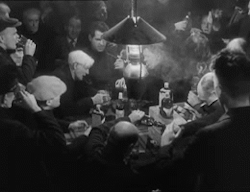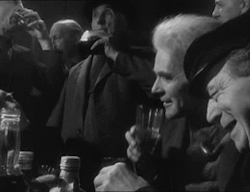By The Landlord
"A poem should be wordless
As the flight of birds.” – Archibald Macleish
“I stand and hear my voice cry out
A wordless scream at ancient power.” – Robert Smith
“I was like that ship at sea in a dense fog … without compass or sounding-line, and had no way of knowing how near the harbour was. "Light! give me light!" was the wordless cry of my soul, and the light of love shone on me in that very hour.” – Helen Keller
Yaaaaeeeeaaarrrhh! Ba-da-da-um-ba-chi-ka-ta-um-do-um-da-do! Psssshhhtfffffcha! Pip! Pap! Pop! What is a wordless vocal? Is it the visceral scream of unplanned, unleashed emotion, Heathcliffian in its most stricken, stripped bare, bloody form? Is it a string of clever but silly sounds and nonsense? Earthy grumbles or mumbles of unconscious concentration? Or a rapid-fire expression of notes and melodies, beats and rhythms put together in vibrant, perfect virtuosity? Perhaps it is all of these, and a lot more, the voice become a non-lexical instrument in its own right, from all cultures and languages and going beyond native tongues, from whether tha is primal unfettered shrieks of rock, punk, 60s garage or high-hill folky yodelling; from jazz scatting and doo-wops to hip-hop beatboxing; from religious chanting to smoky fire vowel singing of the indigenous Blackfoot people of North America. This week we have no words for this topic.
But should there be any words in songs with wordless vocals? Well, that's open to question. This week isn't about songs that just feature a bit of la-la-la or na-na-hey, possibly to create a catchy singalong, or perhaps the performer couldn’t think suitable lyrics, but rather examples where wordless, or non-lexical vocalisations take up whole or at least highly prominent, dominant part of the song.
So where shall we start then? We cannot return to our early evolution, our pre-lingual days of grunting, but let's at least go right back to a proud and ancient culture in which vocalisations are distilled down to feelings as much as dictionary meanings.
The Blackfoot, is a collective name for indigenous tribes emanating from the Canadian provinces of Saskatchewan, Alberta, and British Columbia, and one federally recognised Native American tribe in Montana, USA. Their traditional music called nitsínixki, which means "I sing", from nínixksini – "song", is particularly non-lexical, more "vocables" than vocals as such, sounds designed to express the struggles and the triumphs of life, from warfare to myth and visions, accompanied minimally by drums (istókimatsis), rattles (auaná) sticks and bells. The voice produces high-pitched notes, pulsations, narrowing of tone and nasality, with litany-like repetition that. Here's an example, a Blackfoot medicine song:
Perhaps a distant revaltive of this is Tuvan throat singing, an extraordinary sound that mixing a drone pitch with other notes. While singing words, a key part this is also woven into the non-lexical sounds of this technique, as shown by Mongolia's Batzorig Vaanchig. There’s more on this in our Word of The Week section which exampled the other instrument played, the igil.
Non-verbal song stretches far and wide.The Scottish Gaelic term port à beul or puirt à beul refers to "a tune from a mouth” or mouth tunes often a cheerful tune. Its origins are sometimes thought to come as a way to create a folk dance song where there are no instruments available. Puirt à beul has sometimes been used for dancing when no instruments were available, and even, it is thought musical instruments – in particular bagpipes (surely not!) – were banned banned by the Disarming Acts or the Act of Proscription 1746, although this may in fact be a myth. Nevertheless the human voice is indeed a great instrument when it turns away from words into pure sounds, and here is fine, upbeat example, fuelled by the fine stuff in a bar scene from the great Ealing comedy, Whisky Galore! and the song Brochan Lom. This is a scene I often imagine recreated during many hours of wit and banter here at the Song Bar.
Puirt à beul may well also be in the inspiration for singing styles in other genres entirely, such as the work of Elizabeth Fraser in Cocteau Twins.
And then we might well move across the Atlantic to where jazz saw its early rennaissance, scat singing became very mcuh part of the singer’s repertoire, where the voice does the equivalent of a sax solo, or extends the feeling of the song into improvisation of vowel and consonant sounds. Many singers known for their perfect diction in singing words could also do this, often as a source of wit and invention, from Ella Fitzgerald to Betty Carter, Sarah Vaughan to Cab Calloway.
Cab Calloway
Guitarists and other instrumentalists sometimes scat along with their solos note for note, perhaps as a way to help them concentrate, perhaps to enhance the music in some way. George Benson does this, and among other Sheldon Reynolds from The Commodores and Earth, Wind & Fire.
Perhaps though, no one does this more prominently than the classical pianist Glenn Gould who mumbles to himself while playing. Whether this could be deemed part of the music is questionable but it certainly adds a new dimension and window onto his extraordinary mind.
Perhaps also this is the week to explore bol from the music of India. Bol is a mnemonic syllable used, or rhythmic pattern,or tala the word meaning "to speak.” Or indeed konnakol, which involves a series of syllables to create that rhythmic pattern. Here’s an example:
This is surely also the week to explore beatboxing, best known in hip hop the grandchild of scat and other forms. It came to the fore in the 80s as a complement to turntable skills, from Fat Boys to Doug E. Fresh, but flourished in many different forms in the 1990s and beyond, with Joel Turner, Biz Markie and even Björk engaging in some primal Icelandic rhythms. Fellow Icalenders Sigur Ros also engage in some non-lexical sounds.
But a much earlier form of beatboxing was actually formed in the music of the Appalachian mountains, with the art of “eefing”. Let’s enjoy this expanation from Jimmie Riddle. It’s sounds a bit like a donkey on speed:
Another key figure in beatboxing, and much more, is sound mimic Michael Winslow, best known for the Police Academy films, but also a standup using his talent in all sorts of inventive forms.
Or indeed you may well explore the work of the remarkble Bobby McFerrin, here showing his chest-tapping technique to a rapt audience in some improvisation.
The Anglo-American-German comedian and singer Reggie Watts is also a great talent, his shows a wonderful mixture of strange voices and inventive off-the-cuff beatboxing.
Watts loves a bit of silly nonsense. There are plenty of nonsense songs around, but getting away from the song genre for a moment, what about in entire scripts of wordless vocalisation? Way before Rowan Atkinson's rubber-faced awkward, umming, errming Mr Bean, The Two Ronnies made The Picnic in 1972, a daft story of posh English country house guests heading off on a jaunt. It's shamelessly stereotypical and old-school sexist, but as an alternative to Ronnie Barker's usually intricately clever scripts of wordplay, this time just includes noises to imply actual words, revealing how we often say things that are really just mumbles of nonsense and social nicety.
There are many other examples. Some artists use wordless singing as a way of perhaps expressing the inexpressible. David Bowie reached this during his Berlin period, especially on the second side of Low.
From earlier the same decade, here’s an example previously picked for another topic. The Great Gig In The Sky by Pink Floyd, featured non-lexical vocals by Clare Torry, then a 25-year-old session singer spotted by Alan Parsons, who was engineering the album and liked her voice on a Top of The Pops covers album. The wordless results were outstanding. It might well be a contender for the B-list.
Some artists mix up sounds with words from their own language. Will this count? It’s worth a try. Dakhabrakha, for example, are Ukrainian band who regularly employ non-lexical sounds.
And lastly, another example from a film. Sometimes the human voice can express states of mind beyond language. We began with drinking, and so as this is the Song Bar, let’s end with it. I won’t mention the actual song, but here Harvey Keitel’s character has drunk beyond words in Martin Scorsese's Mean Streets, and here with some nifty camera work, and this song by a great 1950s New York City doo-wop vocal group, dances a merry piece of non-verbal nonsense around it:
So then, that’s quite enough words about wordlessness, and I turn to this week’s wizard of wordless singing, the perfect pejepeine! Place your wordless vocal songs in comments below for deadline this Monday at 11pm UK time, for playlists published on Wednesday. Sounds OK?
It’s goodnight from him …
And goodnight and cheers from them …
New to comment? It is quick and easy. You just need to login to Disqus once. All is explained in About/FAQs ...
Fancy a turn behind the pumps at The Song Bar? Care to choose a playlist from songs nominated and write something about it? Then feel free to contact The Song Bar here, or try the usual email address. Also please follow us social media: Song Bar Twitter, Song Bar Facebook. Song Bar YouTube. Subscribe, follow and share.




